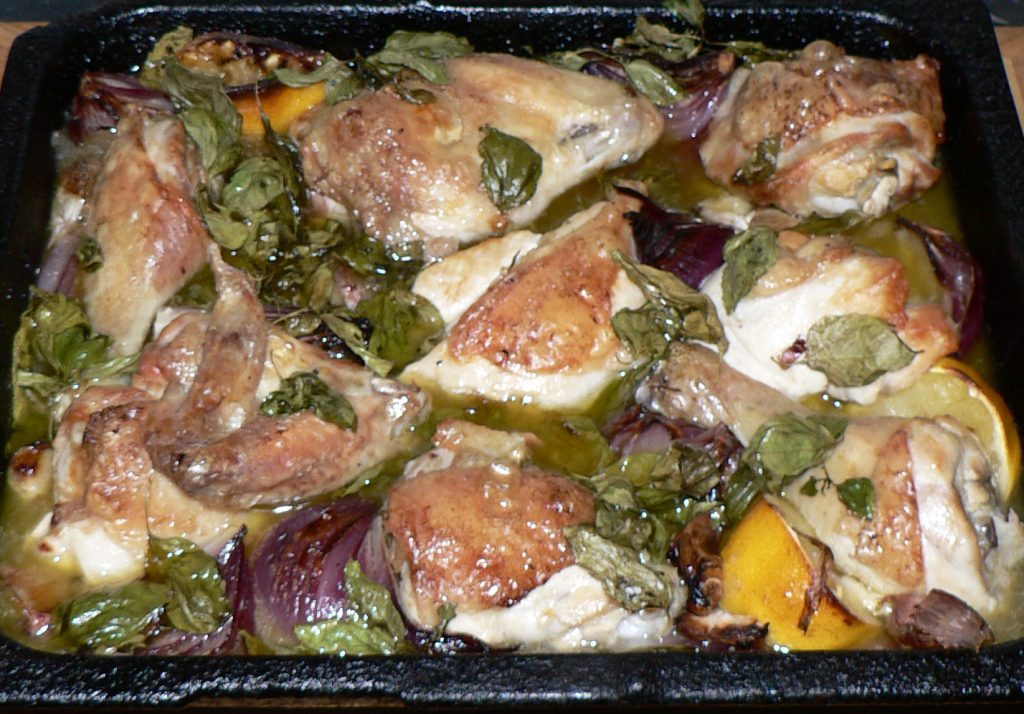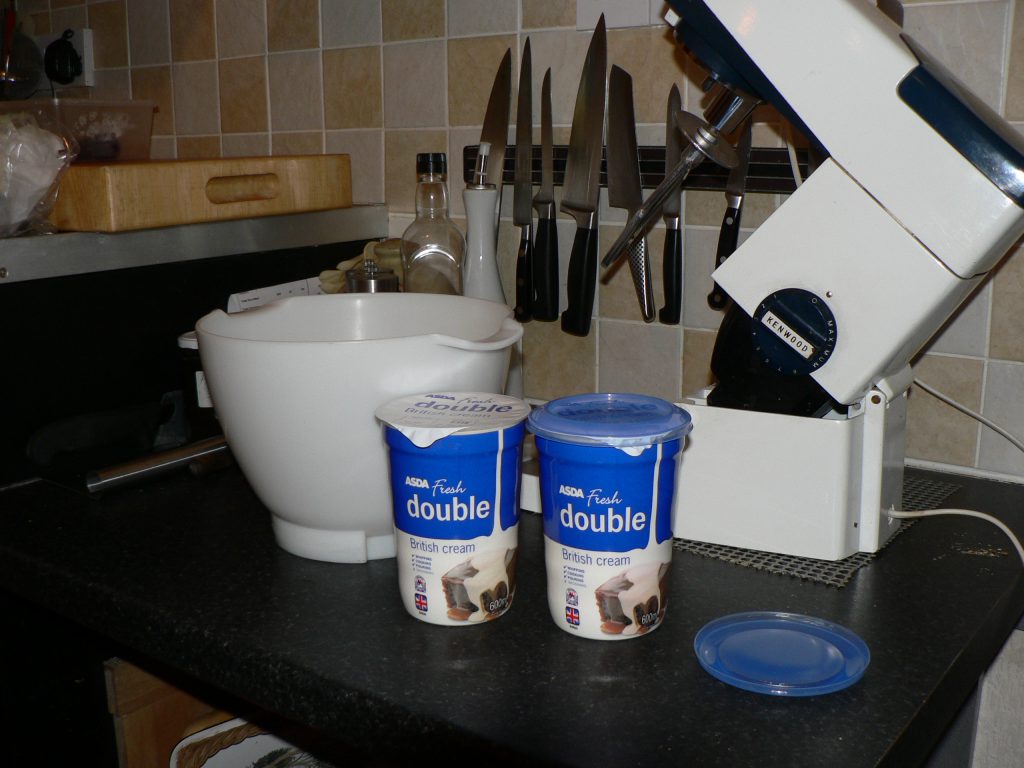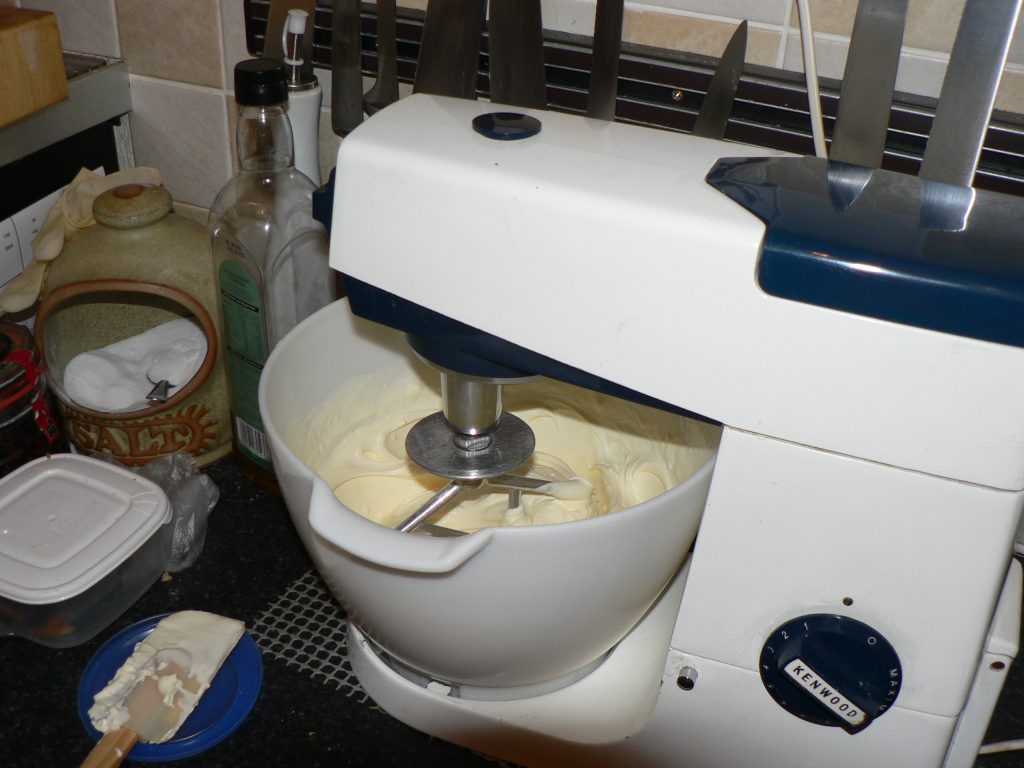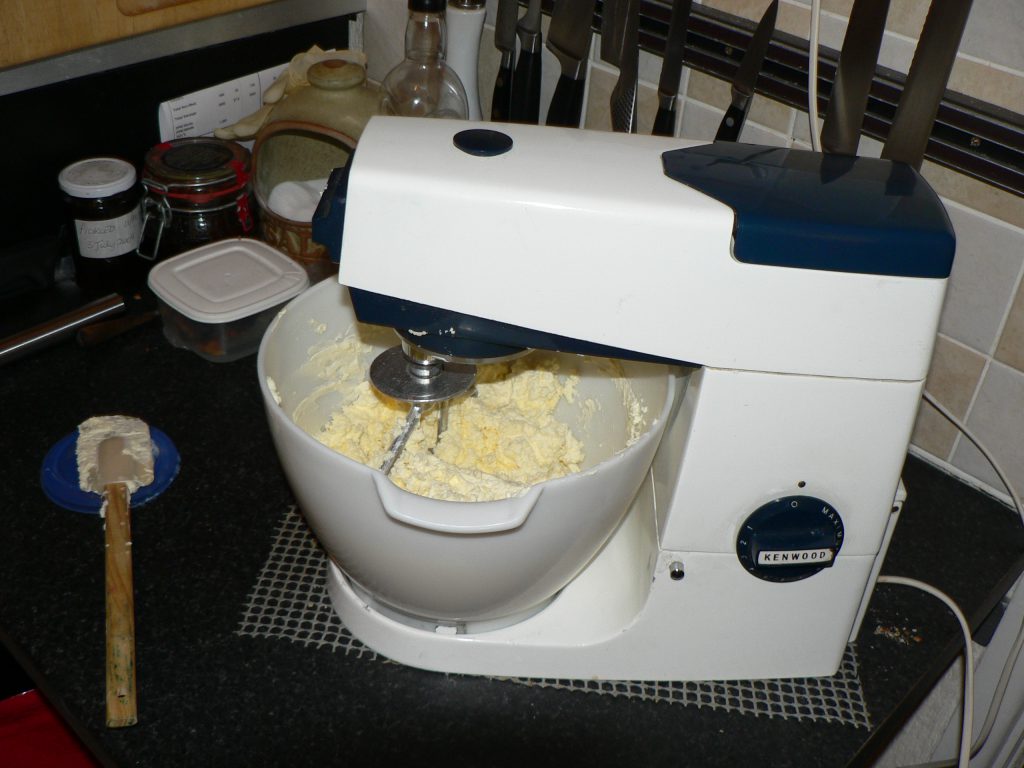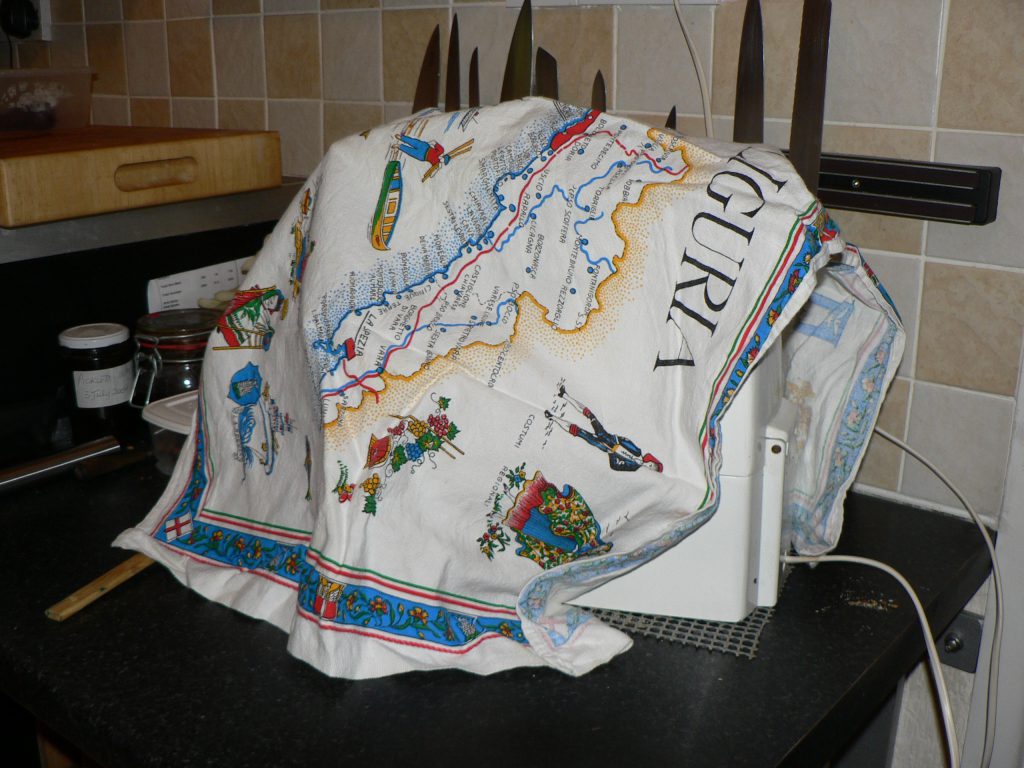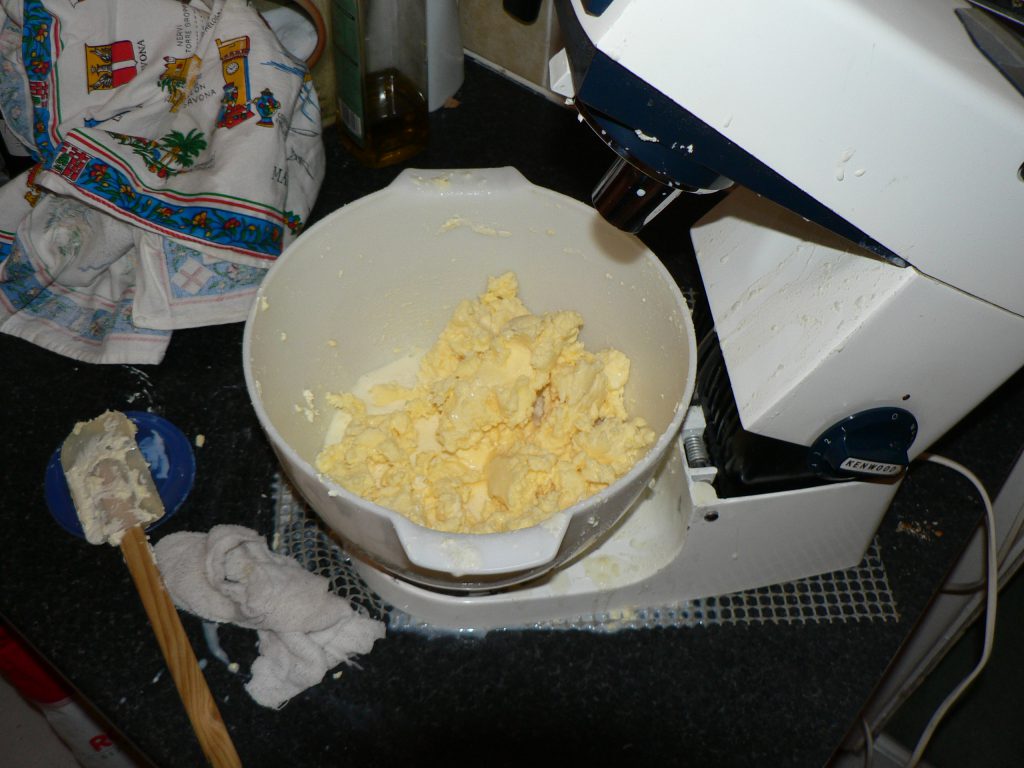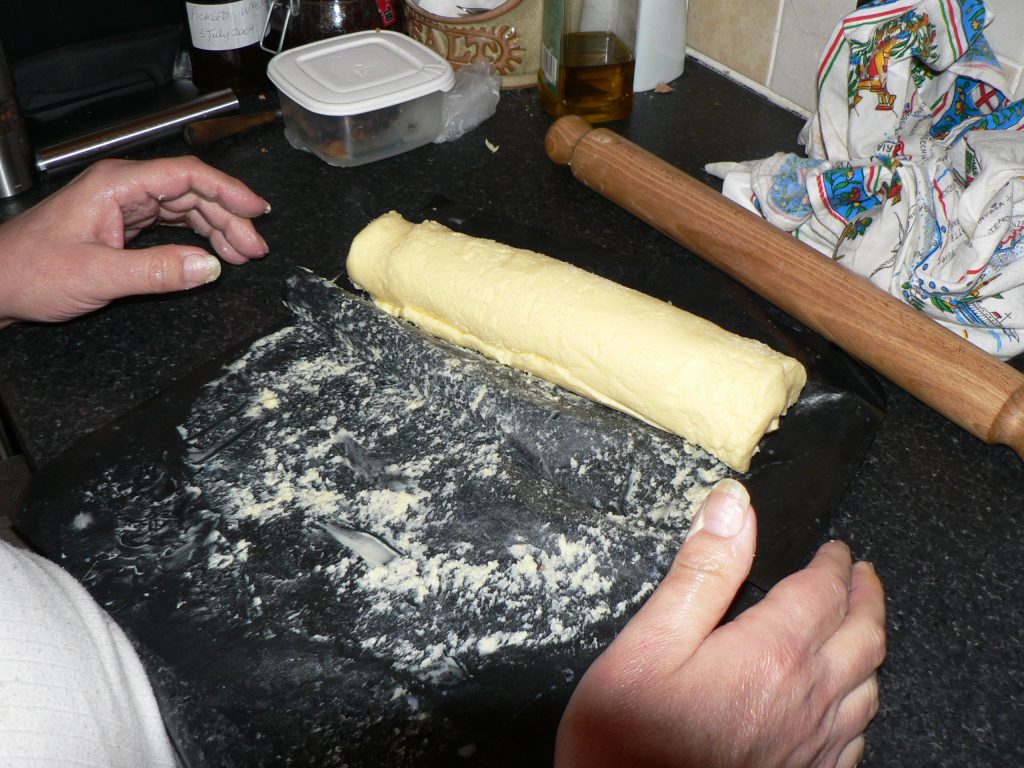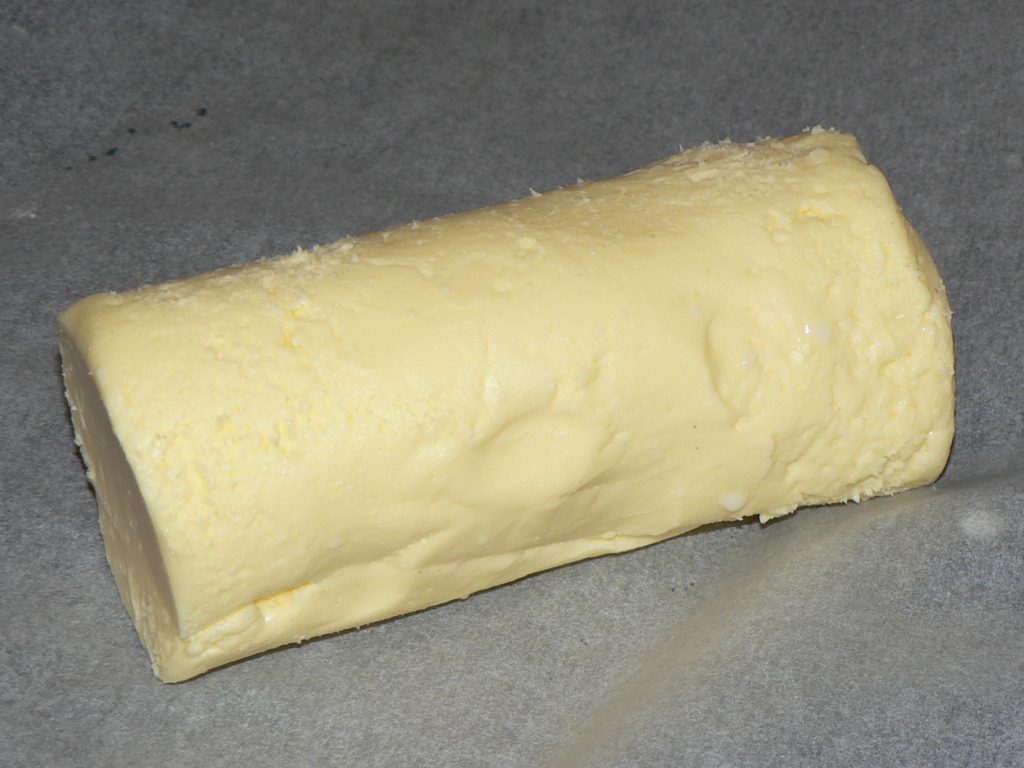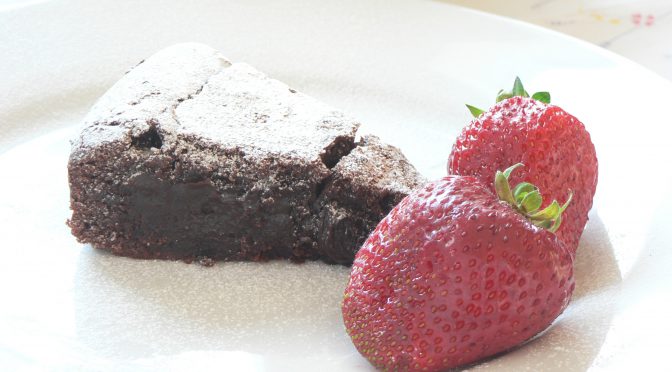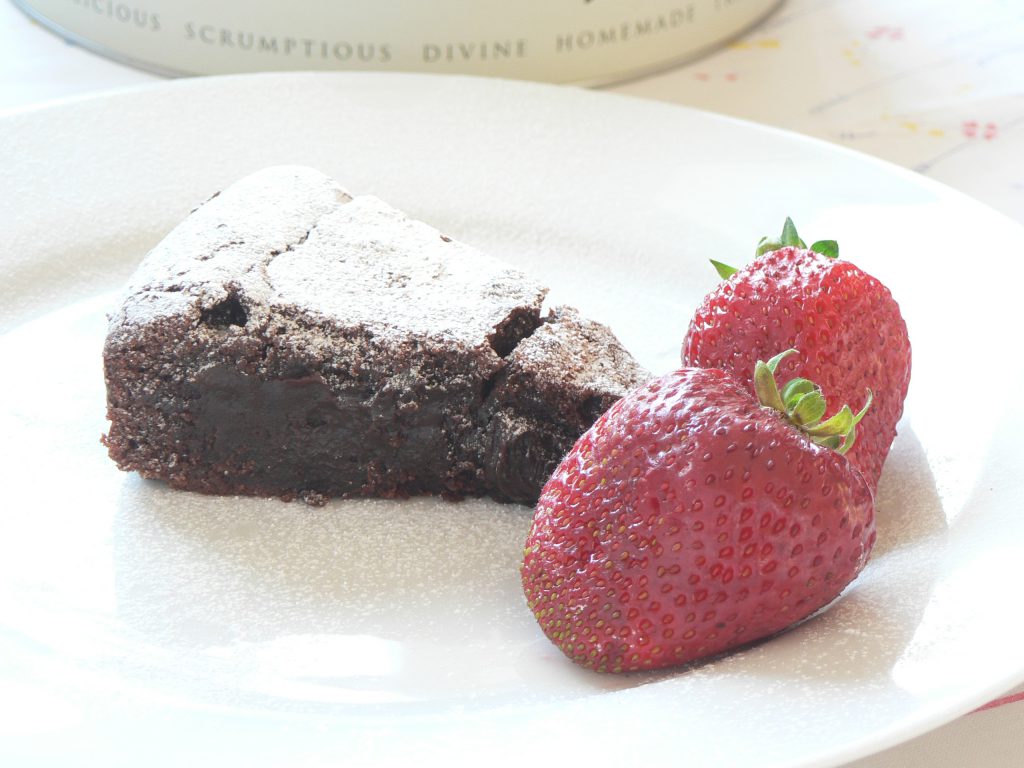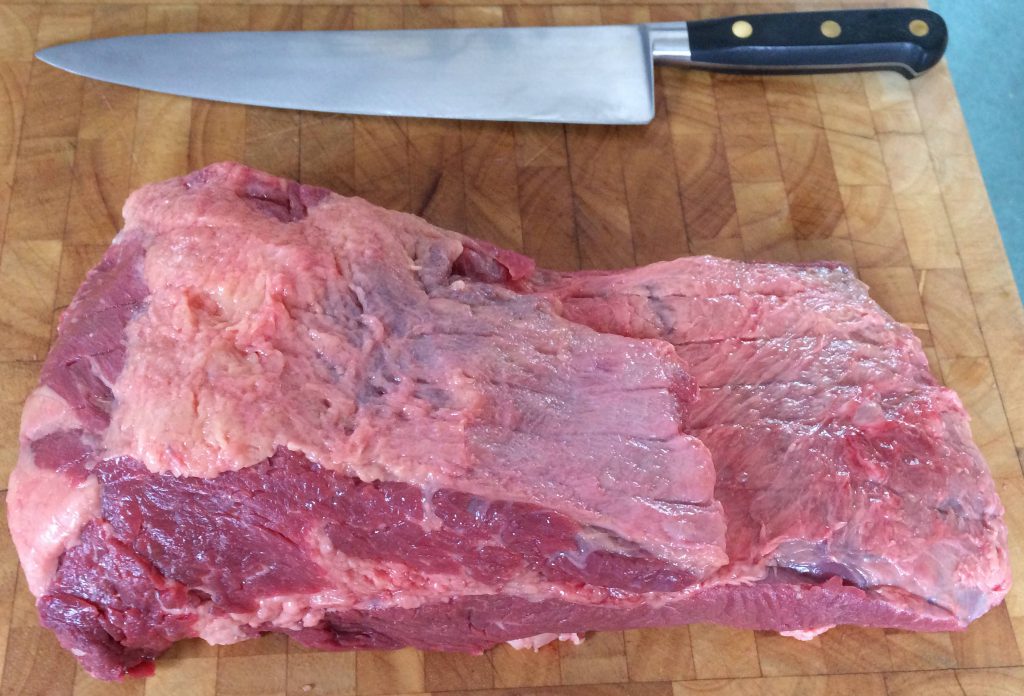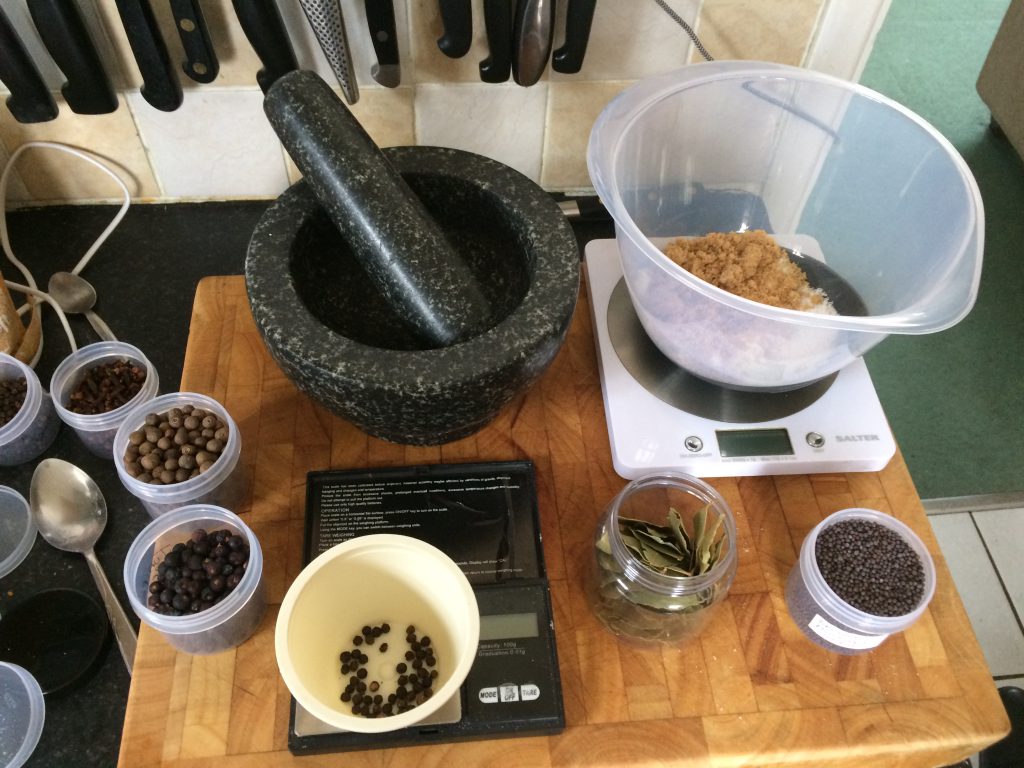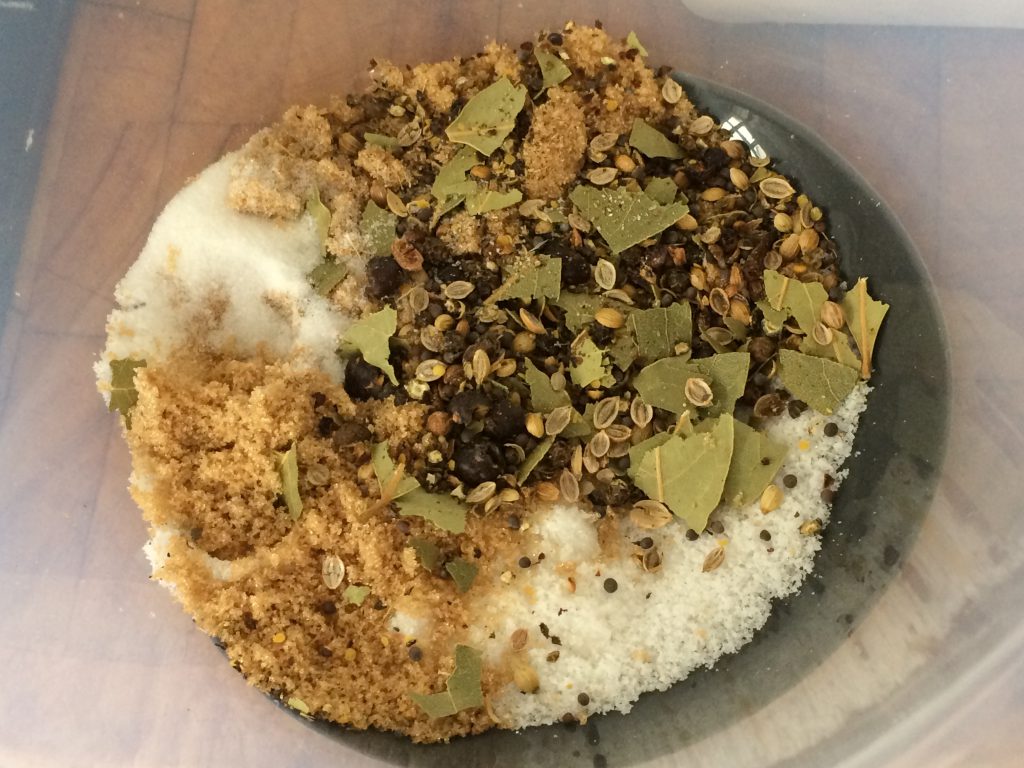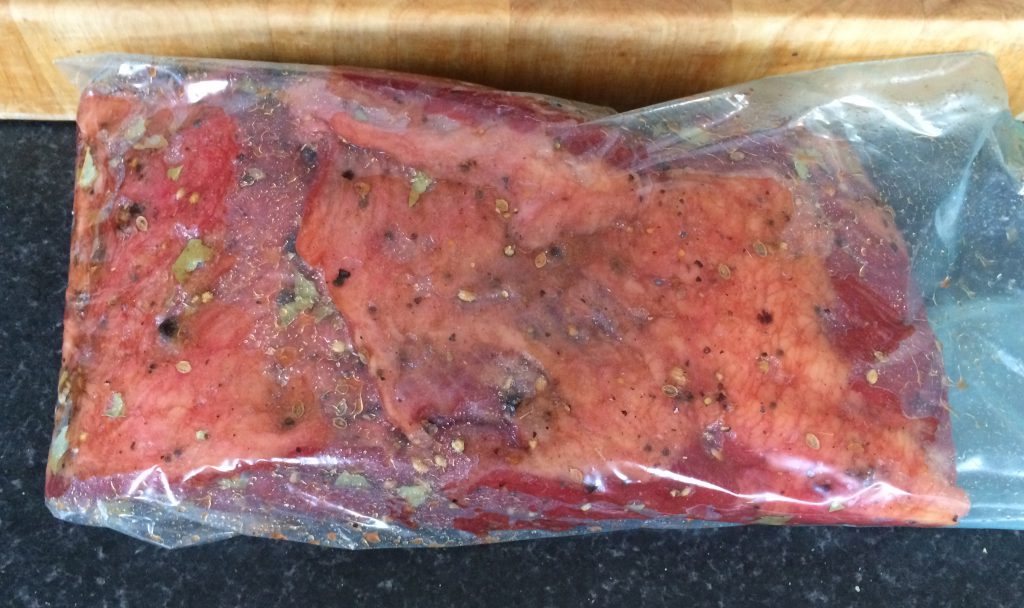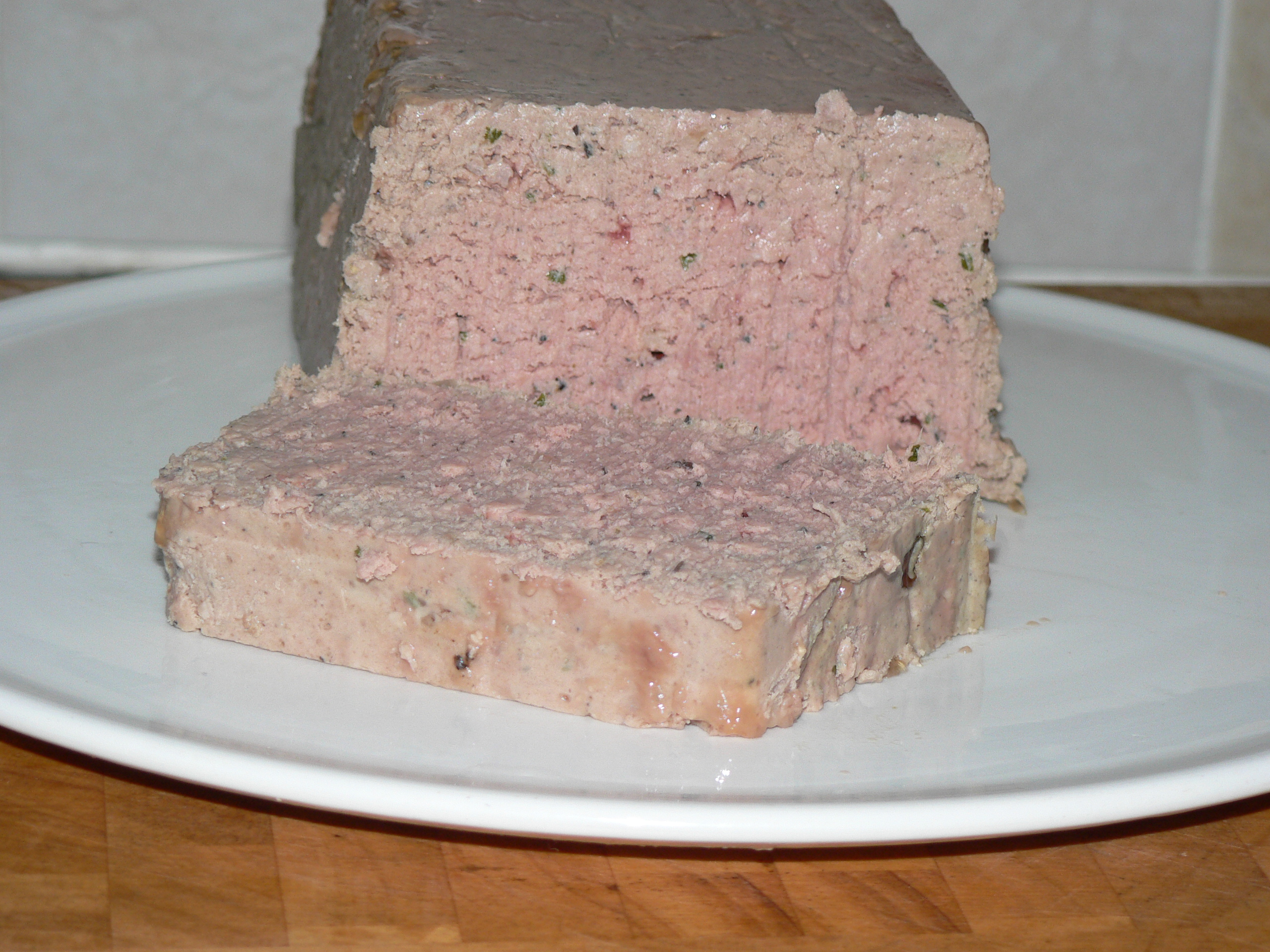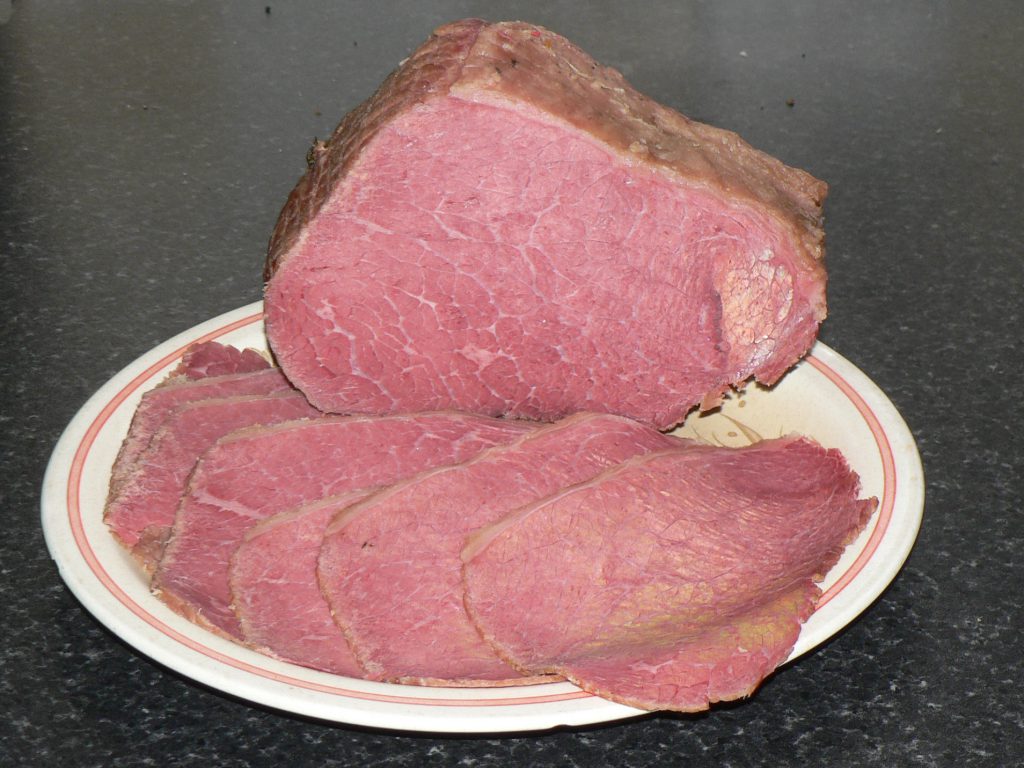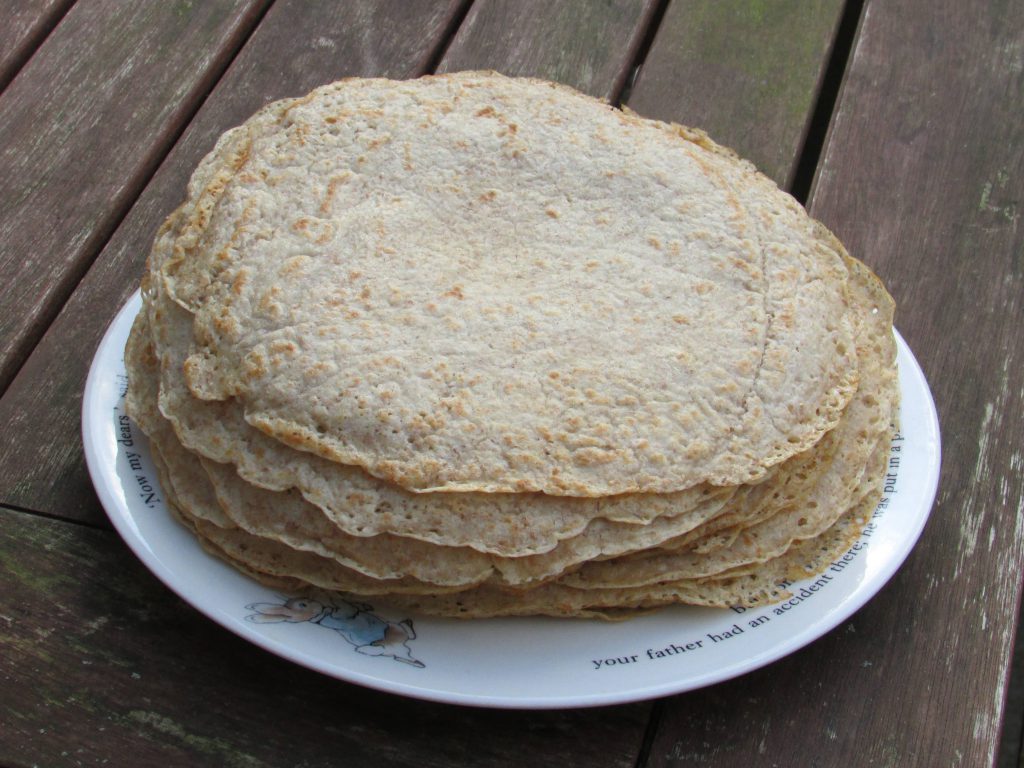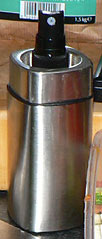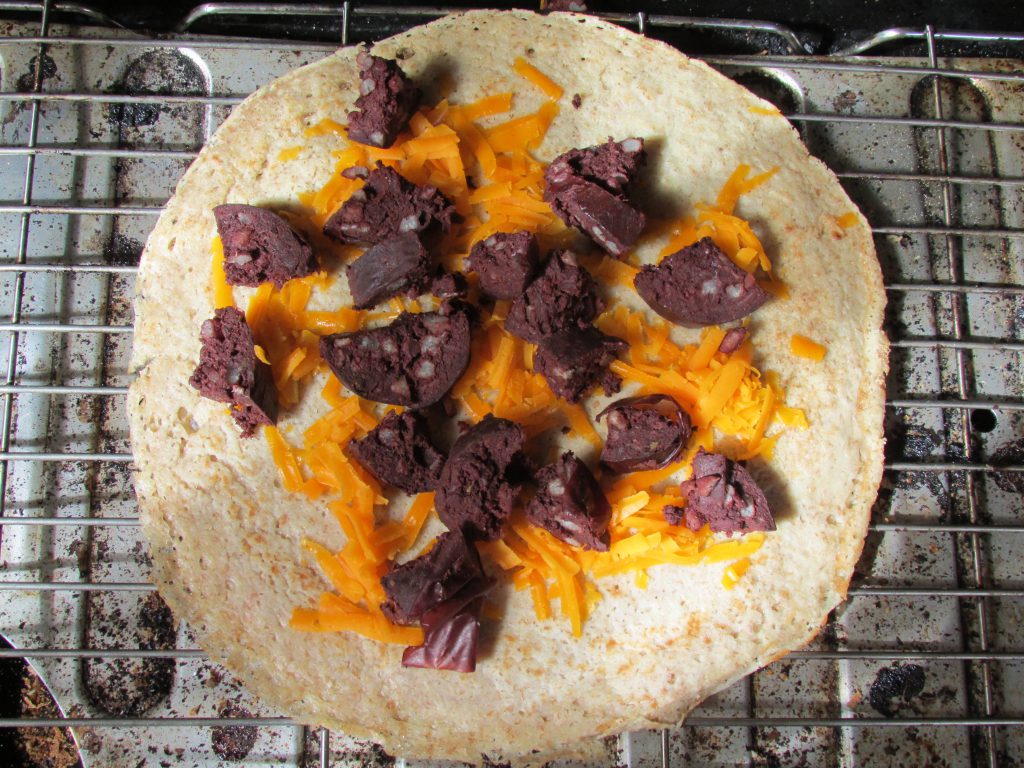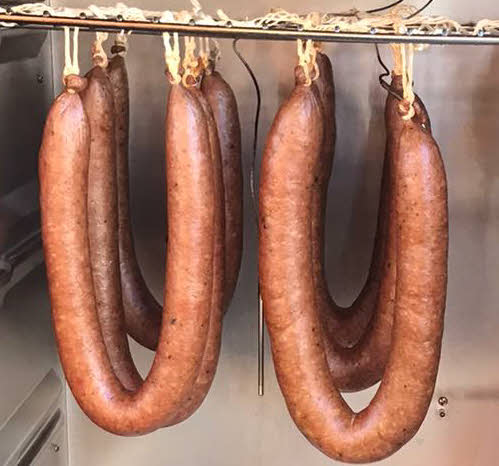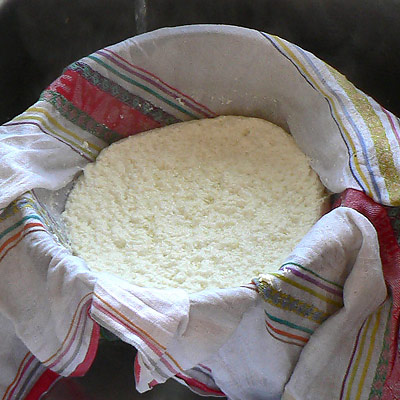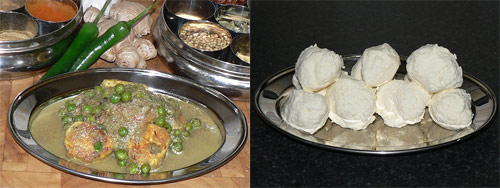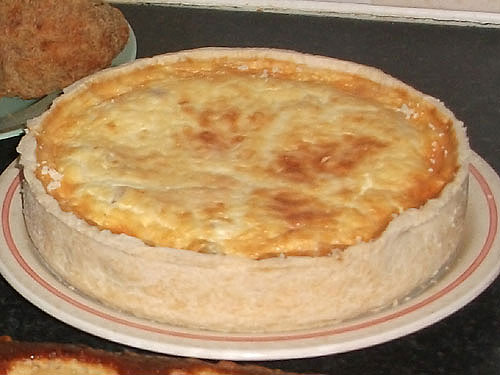
There you go, I’m being posh and calling it quiche! It’s really a good old bacon and cheese flan. It’s a pity that so many poor imitations of this superb rich savoury egg custard are sold by supermarkets and presented to the world on numerous buffets with cheap frozen sausage rolls and those damn miniature scotch eggs.
A good quiche is all about the quality of the ingredients, there’s few of them, so they all count. Use good dry-cured bacon (mild smoked if you like), good eggs, double cream not milk, and you won’t go far wrong. One other thing, and a very important one, is that most recipes (including Delia) will tell you to cook the quiche at too high a temperature. I’ve said this before, but I’ll say it again – cook the quiche at around 160°C or below; you’re making a savoury custard, not an omelette!
I was fortunate to receive Jane Grigson’s book “Charcuterie and French Pork Cookery”, for my birthday a week or so ago. You see, it’s not just me:
Bake in a moderate oven for about 40 minutes. Remember that a quiche is a savoury custard tart; it mustn’t cook too quickly or it will curdle.
I feel a bit of a fraud giving a recipe; it’s not rocket science, but here’s my take on it:
Pastry
6oz Plain Flour
3oz lard (or lard/butter mix)
about ¼ teasp salt
water
Rub the fat into the flour/salt until it resembles breadcrumbs, then add water a little at a time and mix until it forms a dough. In all honesty, I generally make a batch using 1lb flour, 8oz fat and 1 teaspoon of salt, in the food processor. Don’t add too much liquid or the pastry will be hard – about 1½ – 2 tablespoons (ish) should be about right for 6oz flour.
Use the pastry to line a loose-bottomed flan tin (approx. 7½ inch diameter) then prick the base with a fork, line it with parchment paper, fill with baking beans, or rice or dried beans, and bake it at 180°C for 15 minutes. Remove the beans and parchment and bake it for a further 5 minutes. Reduce the oven temperature to 160°C ready for the next stage.
Filling
6 – 8oz bacon
2 – 3oz grated cheese
¾ pint double cream
3 eggs
Salt and pepper
While the pastry is cooking, remove the rind from the bacon and discard it. Cut the bacon into small pieces and fry it, then put it on a paper towel to drain and cool. Mix the eggs and cream and season. Sprinkle the bacon over the base of the pastry followed by the cheese and then fill with the egg/cream mix. I do this while the pastry case is still on the oven shelf to avoid spillage. Bake it at 160°C for 40 minutes or so until it’s set.
It can be eaten warm but according to my wife is better eaten at room temperature the following day.
